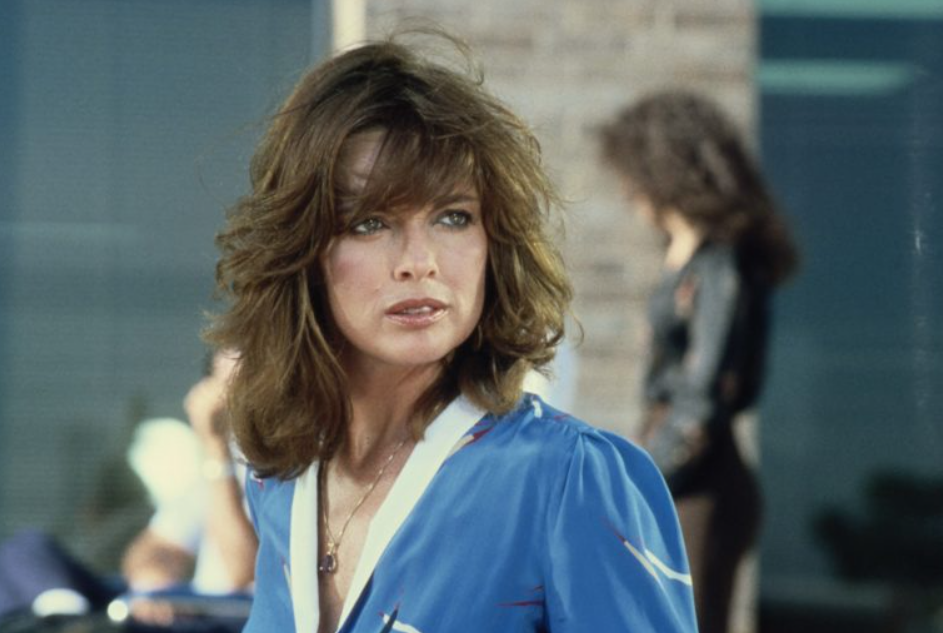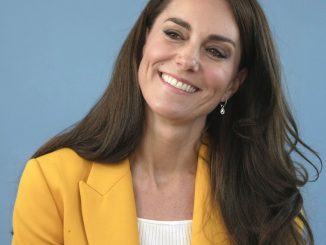
Linda Gray became a household name thanks to her role as Sue Ellen Ewing on the beloved soap opera Dallas. Over the course of more than 300 episodes, she not only showcased her incredible talent but also faced numerous personal challenges along the way. Today, at 84 years old, Gray continues to shine.
Throughout the history of film and television, we have witnessed remarkable performances by countless actors. Some portrayals resonate so deeply that it’s hard to imagine anyone else in the role. For instance, who could envision Little House on the Prairie without Michael Landon as Charles Ingalls or Mary Poppins without Dick Van Dyke as Bert? Similarly, Linda Gray’s portrayal of Sue Ellen is irreplaceable, and fans of the show are grateful she was cast in such a pivotal role.

Gray’s life has been nothing short of extraordinary, resembling a roller coaster filled with ups and downs. She has confronted life-threatening illnesses, addiction, and a challenging marriage. Despite these adversities, she has always emerged stronger, committed to making the most of her life and career.
Starring alongside Larry Hagman and Patrick Duffy on Dallas, Gray recently opened up about her experiences working with Hagman and the dynamic chemistry they shared on set.

Born on September 12, 1940, in Santa Monica, California, Gray faced a significant challenge in her childhood when she was diagnosed with polio. Her grandfather had also contracted the virus, leaving her family in distress. However, Linda maintained a surprisingly optimistic outlook during her own diagnosis. “They didn’t know what it was when he was 17, and he was always in a wheelchair”, she recalled. “When I was diagnosed, everyone went crazy in my family, but I wasn’t. I thought I could have a wheelchair like Grandpa.”
Growing up in Culver City, California, where her father owned a watchmaker shop, Linda was drawn to the performing arts from a young age. She often entertained her neighbors and even starred as Cinderella in a school production at Notre Dame Academy in Los Angeles.

While her father provided a stable presence, he was emotionally distant. As Gray noted in her 2015 memoir, The Road to Happiness Is Always Under Construction, “He was just kind of there, like a piece of furniture”, and emotional discussions were off-limits. In contrast, her mother, Marge, a former artist and ballerina, struggled with alcoholism, leaving Linda and her sister to take charge of the household. “She wasn’t mean, she was just blurred, in her own world”, Gray wrote. This upbringing inspired Linda to pursue a different path, determined to avoid her mother’s fate.

With dreams of a career in medicine initially, Gray soon shifted her focus to acting, influenced by the Hollywood landscape surrounding her. She spent her teenage years modeling for various companies and airlines.
At 21, Linda married photographer Edward Lee Thrasher, but the marriage became a struggle. Her aspirations took a backseat as she became a wife and mother, welcoming son Jeff in 1960 and daughter Kehly six years later. Linda felt emotionally neglected, describing the marriage as “cold” and ultimately deciding to leave after 21 years.
Despite her husband’s disapproval of her pursuing acting, Gray took the plunge and began landing television commercials. She had minor roles in films like Under the Yum Yum Tree and Palm Springs Weekend but hit the jackpot when, at 27, she became Anne Bancroft’s body double for The Graduate poster (1967). Ironically, she later portrayed Mrs. Robinson in a 2001 stage adaptation of the same film.

In her memoir, Gray also shared a humorous rejection letter from Glamour magazine she received in the early 1960s, which she kept as a reminder of resilience. “It kicked me from behind, and made me want to go and do something”, she said.
Though she loved motherhood, the lack of a fulfilling career frustrated her. When she finally enrolled in acting classes, her husband dismissed the idea, suggesting she wait until their children were older. At 37, she forged ahead and trained alongside younger actors. It wasn’t long before she secured her first significant role as a guest star on Marcus Welby, M.D. in 1974.

The turning point came in 1978 when Gray was cast as Sue Ellen Ewing on Dallas. Initially meant to be a recurring role for just five episodes, her performance resonated with audiences and critics alike, leading to her becoming a series regular and turning her into a star.

Dallas, set against the backdrop of family rivalry and scandal at Southfork Ranch, showcased Gray’s exceptional talent. Her chemistry with Larry Hagman was palpable, but she clarified that it stemmed from a sibling-like bond. “He was the bad big brother that I never had”, she explained. Their dynamic translated beautifully on-screen, captivating both the network executives and viewers alike.

The show broke numerous viewing records, becoming one of the most-watched television series in history. The iconic episode revealing who shot J.R. Ewing drew an estimated 80 million viewers, a record that stood until surpassed by MASH*.
For her role, Gray received two Golden Globe nominations and an Emmy nomination for Outstanding Lead Actress. After divorcing Ed Thrasher in 1983, her son Jeff pursued a career in directing and earned an Emmy nomination in 2018. Tragically, he passed away in 2020 after battling leukemia. Gray honored him on Instagram, celebrating his life and the love he shared with those around him.

Throughout her tenure on Dallas, Gray appeared in 308 episodes. Following the show’s conclusion, she continued to work in television and reprised her role as Sue Ellen in the 2012 revival of Dallas, which aired for two seasons. She received a Special Award at the 2014 USA Film Festival, further cementing her legacy.
Now, at 84, Linda Gray remains as stunning as ever. She has navigated many challenges, from her childhood struggles to her difficult marriage and the loss of her son. Through it all, she has learned to transform adversity into resilience.
We admire her strength and wish her continued success in the years to come! Feel free to share this inspiring story with your family and friends.
Boss Notices Scar on His Cleaning Lady and Emotionally Embraces Her

Caleb, a wealthy businessman, was absorbed in his company’s annual report one busy Monday morning when an unexpected encounter changed everything. A janitor entered his office, a woman in her late 50s, carrying cleaning supplies. The moment he looked up, he was struck by her astonishing resemblance to his late mother, who had been gone for 28 years.
Caleb’s heart raced. He invited her in, intrigued and bewildered by her familiarity. She introduced herself as Michelle, a recent hire, and mentioned that she had just moved to town two weeks ago. Despite her cheerful demeanor, Caleb felt a strange connection. The more he looked at her, the more memories of his mother resurfaced, especially a distinctive scar on her arm that mirrored one he had seen in an old photograph.
As Michelle tidied up the office, Caleb’s curiosity grew. He inquired about her scar, only to learn that Michelle suffered from amnesia and could not recall her past beyond twenty years. This revelation sent shivers down Caleb’s spine, igniting a mixture of hope and skepticism. Could she truly be the mother he thought he had lost?
Overwhelmed by his emotions, Caleb shared the unsettling coincidence that Michelle bore an uncanny likeness to his mother, who had died in a car accident when he was just a baby. Both had the same scar. Fueled by a need for answers, Caleb proposed a DNA test to confirm their relationship, an idea that surprised them both yet felt essential.
The drive to the hospital was laden with tension. Caleb wrestled with his thoughts, torn between disbelief and a flicker of hope. What if this woman was indeed his mother? The possibility left him both excited and terrified. He recalled the day he stumbled upon an old photograph of a woman with a child, a picture that had cast shadows on his understanding of his family history. His father had always maintained the story of his mother’s tragic death, but the resemblance of this stranger brought a flood of questions rushing back.
Years ago, during a home repair with his father, Caleb had unearthed the photograph tucked beneath the floorboards. Written on the back were words that sent his world spiraling: “Baby Caleb with Mommy. Happy Birthday, Sweetheart”. The woman in the photo didn’t resemble Olivia, his father’s wife, raising doubts about his past.
Upon arriving at the hospital, they hurried to the reception desk to request the DNA test, emphasizing the urgency of their situation. Hours stretched endlessly as they awaited the results. In the interim, Michelle recounted her fragmented memories, recalling waking up in the woods after an accident, a tale that left Caleb haunted by the uncertainty of her past.
When the nurse finally returned, the results were staggering. A maternity rate of 99.99% confirmed what Caleb had dared to hope, Michelle was indeed his mother. The revelation brought an overwhelming wave of emotion, and Caleb embraced her, tears streaming down his face. However, as joy surged, questions about his father’s deceit surfaced. Why had he lied about Michelle’s fate?
Determined to confront the truth, Caleb drove Michelle to his father’s mansion, apprehensive yet resolute. Michelle approached the door, heart racing, while Caleb stayed in the car, watching. The moment William, his father, opened the door, disbelief washed over him.
Under the guise of a stranger offering a gift set, Michelle engaged William in conversation. As she spoke, he noticed her scar, a chilling reminder of a long-lost love. It was a defining moment, and tension hung thick in the air. As the conversation unfolded, William’s demeanor shifted, recognition dawning on him. Panic began to bubble beneath his composed exterior.
The encounter spiraled as Michelle’s growing anxiety collided with William’s mounting fear. When she made an innocent comment about familiarity, it triggered a rush of suppressed memories in William, leaving him visibly shaken.
Seizing the moment, Michelle turned to leave, sensing the danger brewing. Caleb watched closely, heart pounding, as she rushed to her car and climbed inside. The night wore on, and as she settled into the driver’s seat, she relayed the harrowing experience to Caleb, who knew they were on the brink of unveiling dark family secrets.
As night deepened, Caleb found himself parked outside Michelle’s house, waiting in a borrowed car, anxiety gripping him. He watched as his father’s vehicle pulled up to the curb. Caleb’s heart raced when William crept toward the backyard, eyes darting in the dim light.
William entered the house stealthily, a knife glinting ominously in his hand. What followed was a heart-stopping moment that saw the light of truth expose the darkness of his past. In a shocking twist, William discovered a human effigy lying in bed, the panic of his mistake overwhelming him.
In the ensuing chaos, police officers burst in, catching him off guard. Michelle had anticipated the danger, and her preparedness led to William’s arrest. In a tense interrogation room, he finally broke down, confessing to the crime he had committed years ago, the murder of his first wife, Jennifer, in a fit of fear and desperation.
William’s revelation unraveled the twisted tale of betrayal and loss, exposing the depths of his deceit. He had let the years of lies consume him, and now the truth emerged, irrevocably changing Caleb’s understanding of his family history. With the weight of their shared past finally lifted, Caleb and Michelle faced a new chapter together, embracing the bond that had survived years of separation and lies.



Leave a Reply